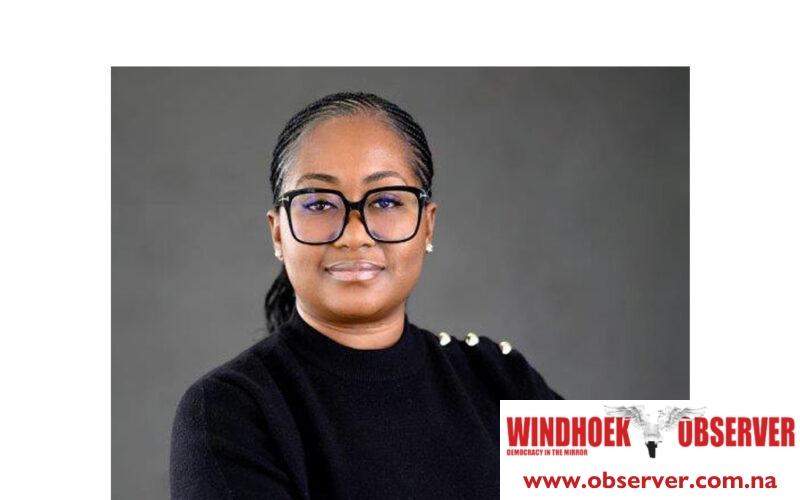Angela Ndatipo
A few years ago, social media was considered the new frontier in marketing and communication. Social media platforms promised brands a direct line to their audiences due to its setup of being fast, dynamic, and disruptive, in this respect it has delivered on this promise in more ways than one. The Government Institutions Pension Fund (GIPF) has embraced this new and emerging technology as it has become a vital tool to share news, views, updates, and can respond to queries, and speak to our members in an engaging, personal, and accessible manner to many. But here’s the one thing that we’ve learned: social media is not the whole story, it is just one chapter in a much broader digital narrative, one that continues to unfold every day and one that we need to use strategically, proactively and appropriately, based on our message and audience.
If you ask around in most boardrooms, you will hear this: “we need to improve our digital strategy, let us boost our social media presence.” The response to this is that while the intention is correct, the assumption is flawed. Social media is part of digital, it is not digital.
Digital, in its true sense, is an ecosystem, it is inclusive of your mobile applications, online portals, websites, intranets, automated systems, emails, and even the data that is quietly working behind the scenes. Social media is about how information flows, how services are accessed, how trust is built, and how all those elements come together to form an integrated experience. The GIPF has embraced social media platforms strategically through the realisation that social media forms an integral and integrated part of a bigger picture and this approach has fundamentally changed how we operate and communicate with our members and strategic stakeholders at the Fund.
Social media a real solution for real people
The GIPF recently launched its Member Verification Mobile Application. This self-service tool enables members to verify proof of life in the comfort of their homes and is accessible to GIPF pensioners, child and spousal annuitants who have access to a smart mobile device and data and is available on android and IOS devices. Before this application, pensioners, many living in remote areas, had to travel long distances to verify their proof of life. This application has positively transformed the Fund’s operations in that the digital offerings streamline the GIPF’s online presence to meet its strategic objective of being a member centric pension fund. The mobile application requires a few taps, a smart mobile device and data and can do be done in the comfort of your own home. The Online Member Portal (Self-Service Kiosk) on the other hand is not your typical physical booth, it is an accessible online platform where members can view and download their pension benefit statements. This offering alleviates physical visits to our branches, is a queue less offering, does not require paperwork, and is empowering in that members have access to information at the click of a button.
The question one now asks is, what is the role of social media in all new and emerging technological developments? The answer is simple, social media becomes the storyteller. Social media enables organisations to demonstrate how these tools work, create awareness on their benefits, and what users should look out for are the regular updates and interfaces Organisations should, however, consider their audience demographics, needs and abilities when introducing new media platforms and must integrate such offerings with traditional media such as radio, print brochures, and face-to-face interaction.At the GIPF we believe in a multi-channel approach, inclusive of outreach sessions in rural areas, SMS reminders, and printed information packs.
We aim to have a holistic integrated approach that does not merely push digital but ensures that all stakeholders have an experience and interaction with the Fund in a manner that is natural to them.
Digital has not only changed how we communicate to external stakeholders but has also changed the internal communication strategies of organisations. Teams collaborate more seamlessly through digital tools as internal campaigns, key internal updates, and performance updates flow through internal newsletters and messaging platforms. Organisations are building a digital culture, not just digital content through their communications strategies. This is backed with data, not vanity metrices, but insights, what content people respond to, what issues generate the most questions, where we can improve, providing key insights on how communication evolves from activity to strategy and stakeholder engagement and satisfaction.
Thus, marketing and communications teams are reminded that the magic does not just merely happen on these various platforms by chance, it happens through connections made with stakeholders on these platforms. This is irrespective of whether it is a Facebook post, a mobile application interface, or a one-on-one conversation at a community event. It all amounts to the same thing, making people feel seen, heard, and supported.
Beyond the feed, social media gets it right as organisations cannot do it alone, therefore, be bold, use the many tools on offer, embrace the trends and build an ecosystem that is bigger than any one channel.
*Angela Ndatipo is a digital media and marketing officer at the Government Institutions Pension Fund (GIPF).



